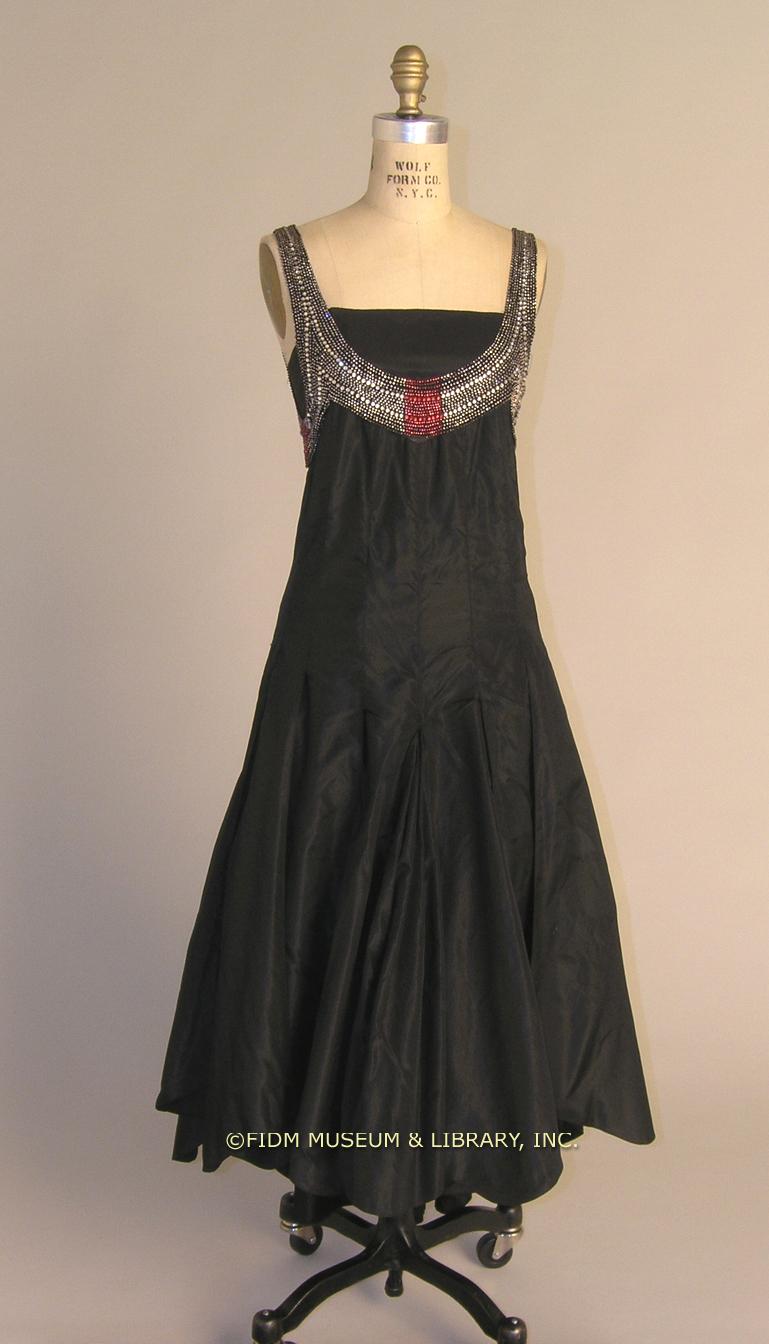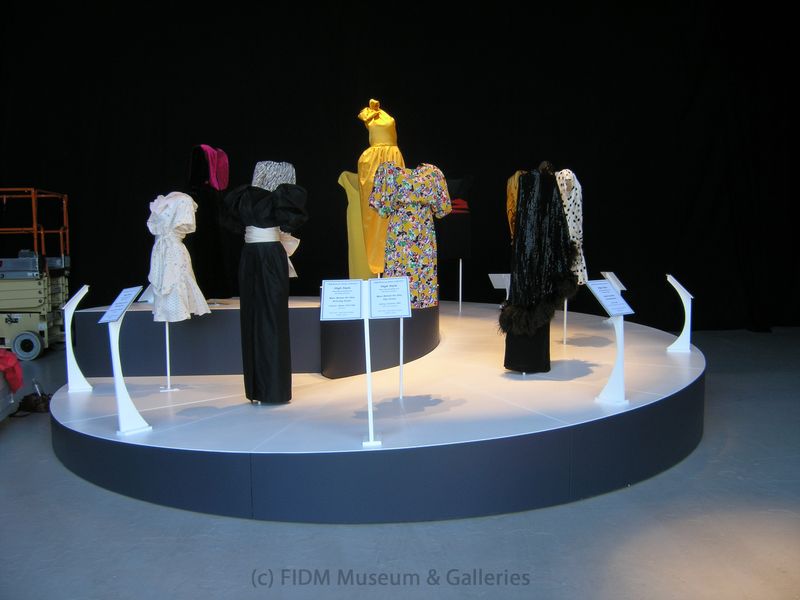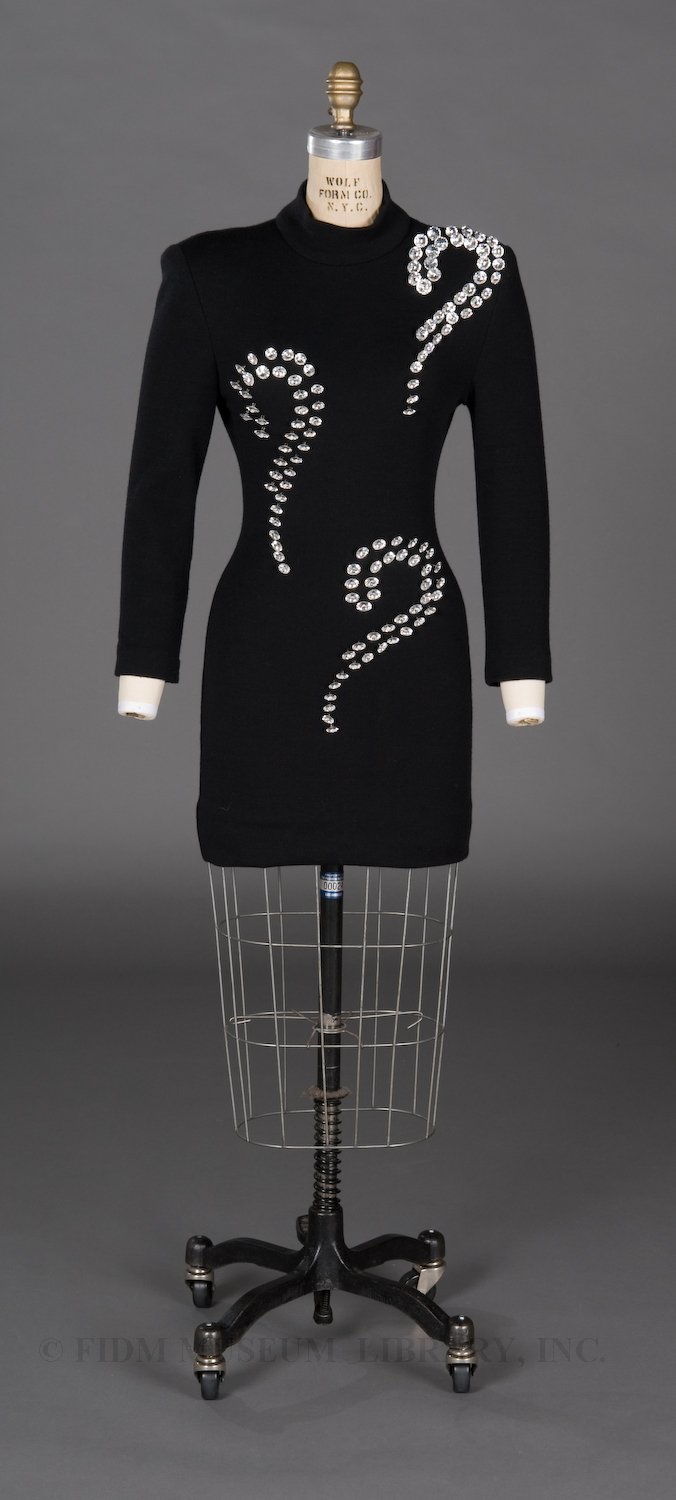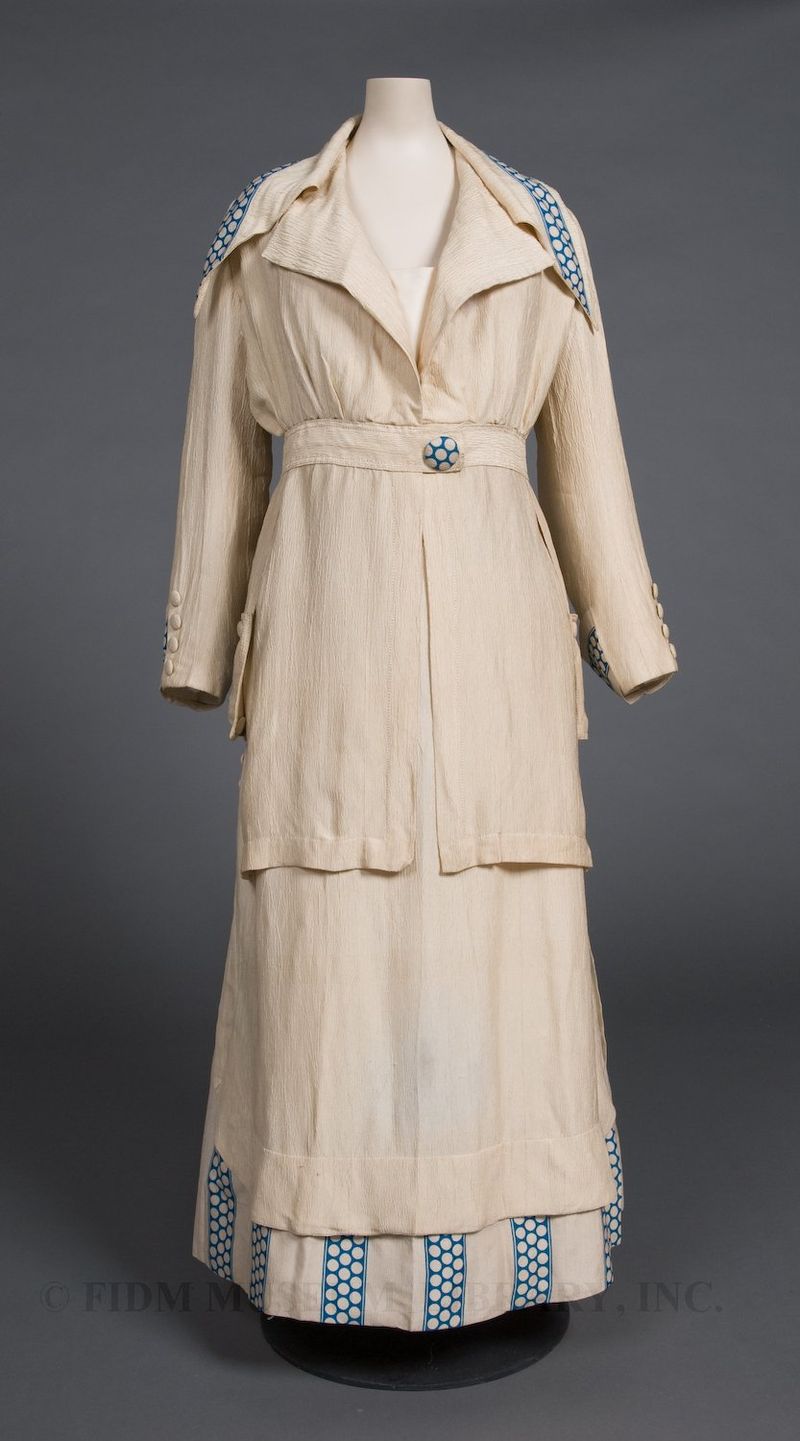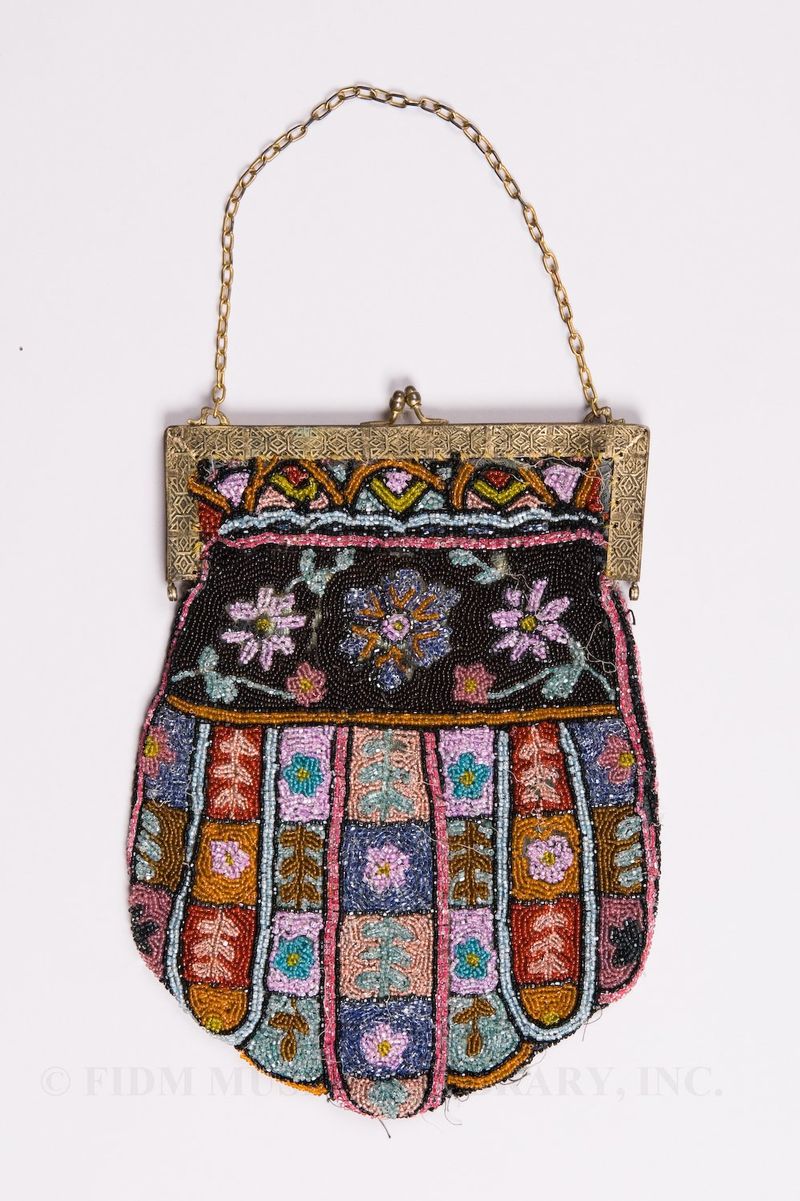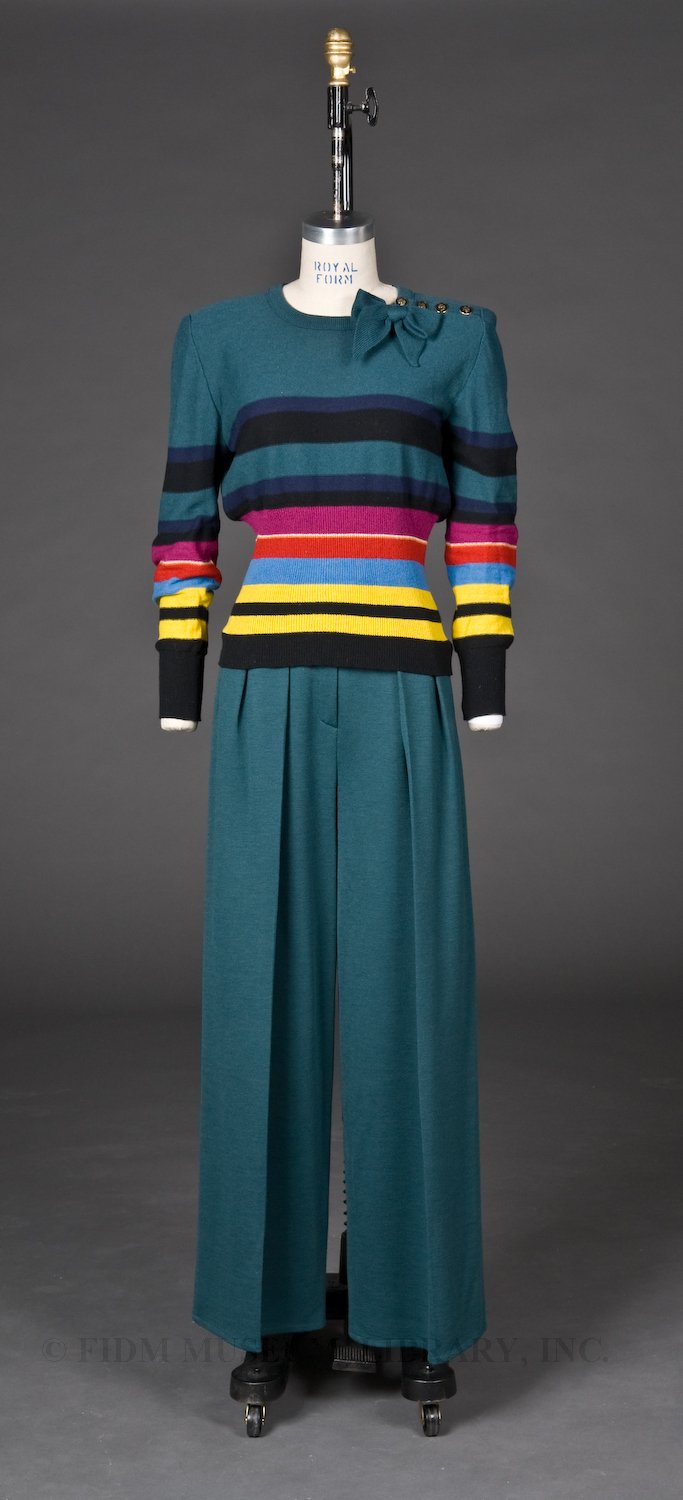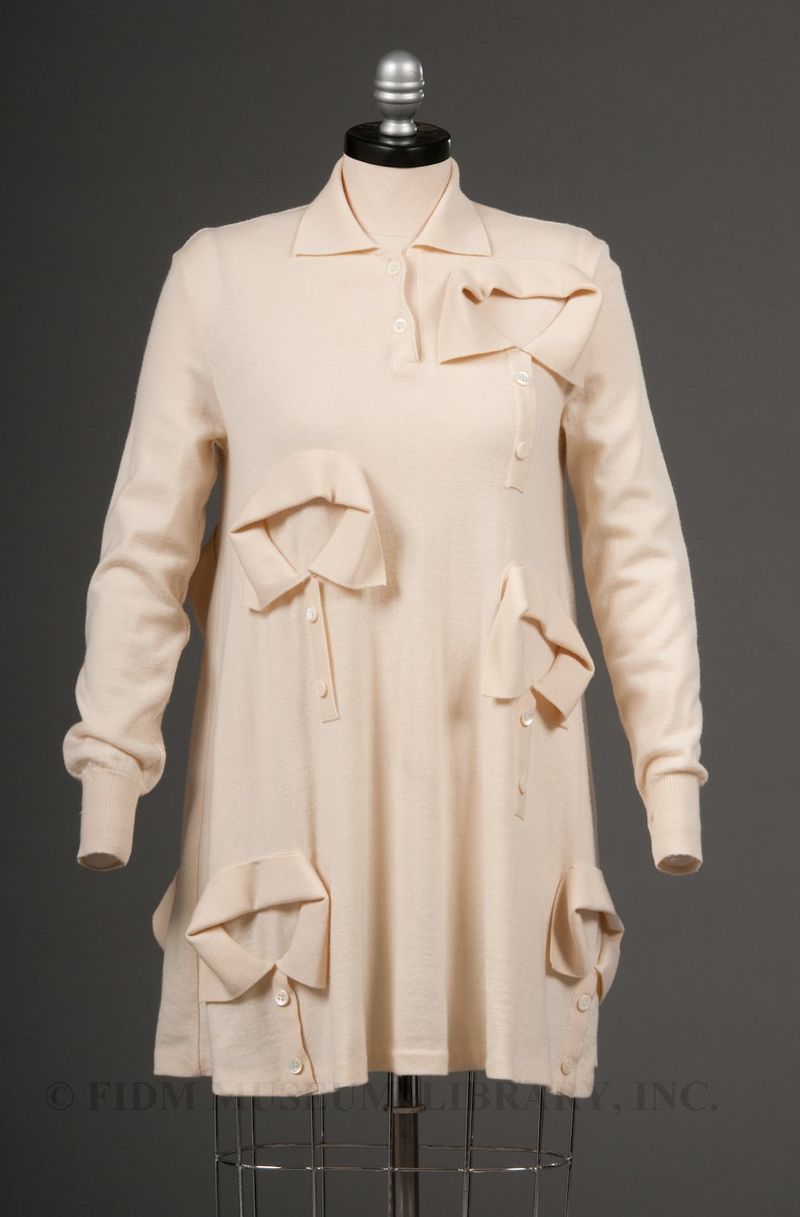This website uses cookies so that we can provide you with the best user experience possible. Cookie information is stored in your browser and performs functions such as recognising you when you return to our website and helping our team to understand which sections of the website you find most interesting and useful.
During the nineteenth century, black clothing was usually worn to signify a special status, i.e. mourning, religious piety, extreme poverty or a position of economic and social authority. Because many professional men adopted black suit coats after 1850,... Read Article ››
FIDM Museum Shows Off at Debut
Our post today was written by Meghan Grossman Hansen, FIDM Museum Registrar. Last month the FIDM Museum participated in the Fashion Institute of Design & Merchandising’s annual Debut fashion show—but calm your fears, there were no models sauntering... Read Article ››
Patrick Kelly
Patrick Kelly’s (1954-1990) irreverent mini-dresses embellished with buttons, bows or rhinestones were his most iconic creations. One 1988 version featured tiny billiard balls sewn to the bodice! When interviewed, Kelly always credited his grandmother... Read Article ››
Tailored suit
In the 20th century, the tailored suit became a standard uniform for professional working women. Consisting of a jacket and skirt in matched or closely coordinated fabric, it developed in the late 19th century as an evolution of specialized garments worn for... Read Article ››
Handbag variety
Like shoes, handbags and purses straddle the line between functional and decorative objects. Though many women (and some men) consider them necessary containers for objects such as keys or money, the sheer diversity of available styles demonstrates that... Read Article ››
Sonia Rykiel
Sonia Rykiel's signature garment is the striped sweater. Her earliest versions were shrunken, body-hugging "poor boy" sweaters with horizontal stripes designed in the early 1960s. The use of soft, knit fabric (often striped) became a trademark,... Read Article ››
Moschino Cheap and Chic
By the time Franco Moschino (1950-1994) introduced his "Cheap and Chic" line in 1988, he had already earned a reputation as the irreverent "court jester" of the fashion world. From the time he debuted his first "Couture!"... Read Article ››

